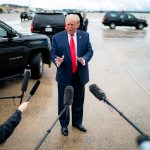Boeing, the aerospace company, is once again in the hot seat after the National Transportation Safety Board (NTSB) accused the company of being uncooperative during an investigation into a midflight door blowout. The NTSB Chairwoman, Jennifer Homendy, expressed frustration at a Senate hearing, claiming that Boeing had repeatedly failed to provide essential documents related to the emergency door incident.
The whole fiasco began when an emergency door blew off midflight in January, putting the passengers’ safety at risk. The NTSB, responsible for ensuring transportation safety, demanded key documents from Boeing to understand the circumstances of the incident. However, according to Homendy, the company has been dragging its feet and withholding crucial information. She specifically mentioned the lack of documentation related to the opening, closing, and removal of the door, as well as the team responsible for this work at Boeing’s Renton facility.
Boeing swiftly defended itself, asserting that it had, in fact, provided all the relevant documentation and even suggested that the missing documents simply did not exist. They claimed to have shared the names of Boeing employees involved in the door operations and stated that any undocumented actions would naturally result in a lack of documentation.
However, the NTSB stood its ground, refuting Boeing’s claims and indicating that the names of employees who installed the door plug were not handed over. Furthermore, the team leader was conveniently unavailable for an interview due to medical leave, adding to the suspicion surrounding Boeing’s transparency in the investigation.
This incident has only added to Boeing’s unflattering track record of technical failures and the subsequent national spotlight. With mounting scrutiny, the company recently ousted the head of the Boeing 737 Max program, further underscoring the tumultuous times for the aerospace giant.
As the investigations continue and tensions rise, Boeing finds itself at the center of a storm, facing not only technical challenges but also significant public and governmental scrutiny.




